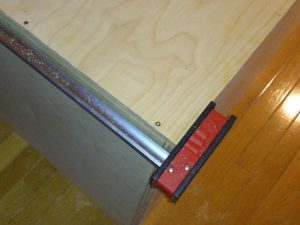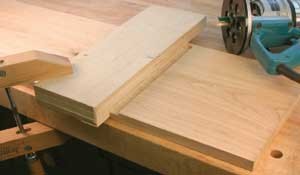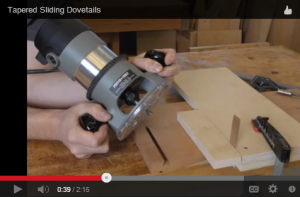We may receive a commission when you use our affiliate links. However, this does not impact our recommendations.
While Popular Woodworking may be known by many readers for its tremendous expertise in hand-tool craftsmanship, it should not be forgotten that we have some serious power-tool experts on staff, and always have. That was the inspiration for creating the latest edition in our free woodworking downloads series. Have you downloaded the free PDF on using a router dovetail jig to go beyond joinery basics and into sliding dovetails? If not, do so now – and then check out these additional ideas and resources I’ve pulled together for your experimentation in router techniques.
1. Lately I’ve been using a router for straightening and squaring edges of all lengths. This is by necessity, because I’m working in an apartment without a table saw, and have not yet invested in high-quality hand planes or a large workbench. But it has reminded me that the router is quite a versatile tool, and it’s very efficient for this particular task. Glen Huey wrote a detailed blog entry called “Dirt-Simple Router Jigs” that covers straight cuts and the jigs he keeps handy for that work. Give the router a try, and then see if you still go to your table saw every time you want to trim an edge.
2. Within the same article, Glen discusses using the square platform jig for dados. This section will help you if you’re starting to create housed dovetails with your router. The housed dovetail socket is a natural extension of Glen’s dado technique.
3. The only hang-up you may discover in this work is the way sliding dovetails have a tendency to bind when you are working in widths of several inches or more. Matthew Teague created a nice video slideshow that details his technique for tapering a sliding dovetail. He uses a shim to create an equivalent taper in both halves of the joint, all with the router.
If you have found your way onto the “Woodworking Daily” blog list, it may have been via our free woodworking downloads page, of which the router jig PDF is the latest edition. If you don’t yet have the complete set of free PDF’s, be sure to visit the page and download a few more.
Also, please forward these links to your friends who may be interested in woodworking so they can get started efficiently and without breaking the bank!
–Dan Farnbach
Here are some supplies and tools we find essential in our everyday work around the shop. We may receive a commission from sales referred by our links; however, we have carefully selected these products for their usefulness and quality.












Dan,
I’ve always considered power tools as an adjunct to hand tools.
Now though you’ve hit upon a facet that I hadn’t consciously considered: that of space, time, and accuracy.
With constrained space, you have to make do with that limitation. A straight carbide bit in a router along with a straightedge will cut perfectly square to a hair fine line the length of the straightedge. Trying to trim with a joiner plane to the same line and square might be beyond the abilities of many. especially without a bench.The accuracy factor (assuming a perfect 90 deg router to tool angle) can not be denied – nor can the obnoxious level and pitch of noise made by the tailed devil…
But, you have given me a good reason to rethink my relationship with the two routers buried in the garage. Assuming I can put an exploratory archeological expedition together and ascertain exactly where they might be without disturbing the accumulation of wood, metal, and unknown historic debris and avoid causing a potentially fatal landslide, I may reconsider their utility.
Maybe.
Take care and be safe!
Albert A Rasch
“And yes, they are still trying to kill us all with 107s!”
I am very curious about something… I have seen a number of references lately to straightening and squaring edges using a router. Is there an advantage to using a router and a straight edge over using a circular saw and a straight edge?
Hi Dan,
Good job.
Can you do one on making circles using a router and using a router with a patterning bit?
Thanks
Rocky